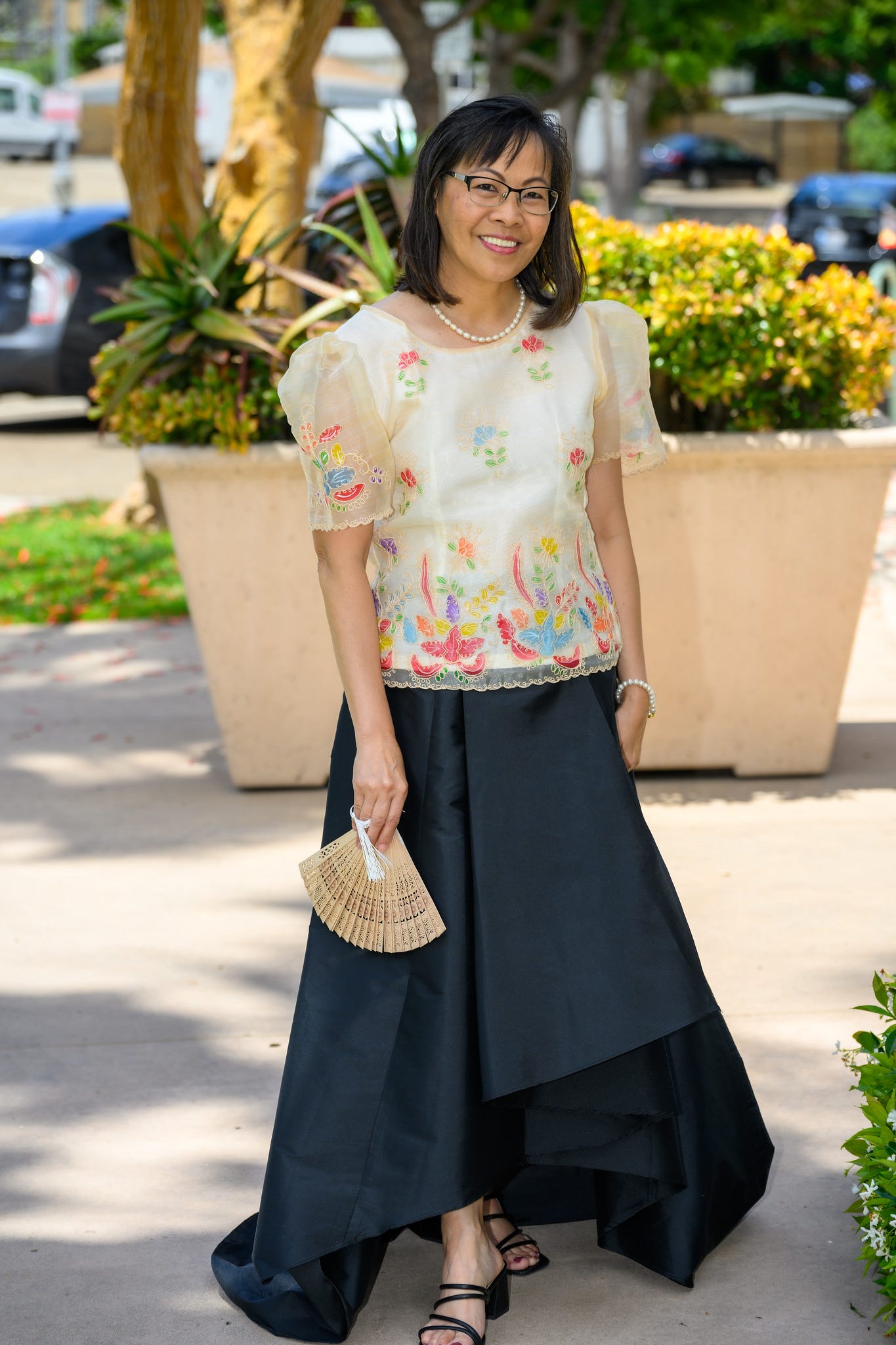
Sunday was the culmination of a months-long AAPI workshop for which we got a California Humanities Grant. Thanks to Thelma Virata de Castro and the San Diego Writers Ink for organizing this event at the Point Loma Hervey Library.
TRANSCRIPT:
Decolonizing my Flat Filipino Nose
Hey, Flatnose.”
I turned to respond, but it was only the TV. Flatnose was a warrior in Vikings, a show on Netflix. His nose was broad, with large bumps on either side of the bridge, like it had broken in a few places and did not heal well. His nose looked nothing like mine.
See, when I was a child, people called me Flat Nose. I used to scrutinize my nose in the mirror and compare it with the transparent plates in my Encyclopedia Britannica. Unlike the textbook example, my nose has no bridge. It is round, like a button mushroom. Its fleshy sides flare like an overripe tomato. My nose could be considered a typical Filipino nose.
I had the misfortune of being born after a sister, whom the family considers a Spanish mestiza. Her nose is sharp, tall, or defined—adjectives that did not apply to me.
Before Flat Nose, I was called Kimmot. In Ilocano, my father’s language, it means the tail end of a chicken, thus a common nickname for the youngest child.
I stopped being Kimmot at five when my baby brother was born. Thank goodness! It took me twenty more years to gather the courage to reject Flat Nose. It happened around the time my father died. I was angry at everything and everyone.
One day, Mama called me by my nickname, and I exploded. "Stop calling me Flat Nose!"
I expected her to call me rebellious, disrespectful, and ungrateful—the usual acrid tone of our conversations during that time. Instead, she looked as if she was about to cry.
"Lambing ko lang kaniam." It was merely a term of endearment.
Filipinos express their affection with descriptive pet names. Every Filipino has an Auntie Baby, an Uncle Boy, a thin girl named Ting-ting, and sadly, an overweight relative called Tabachoy.
If you have Filipino friends, they may have commented on your appearance - to your face. The unspoken standard seems to be the impossible genetic dream attributes—height, white skin, thin lips, high noses, and eyelids that do not disappear. This attitude is known as colonial mentality.
My maternal grandmother studied under the Thomasites in the early 1900s. She adored her teacher, one of the Americans sent to the Philippines to educate “little brown brothers,” in the name of Benevolent Assimilation.
Lola was a refined lady but expressed disgust by saying ”Leche!’ It was the closest she came close to swearing. Leche translates to milk, but it also is the color of the colonizers’ skin. Her use of “Leche!” summarizes our complicated relationship with our colonial past.
I recently read The Bluest Eye by Toni Morrison. In it, Pecola Breedlove, an eleven-year-old black girl fantasized about having blue eyes. If only her eyes were blue, she would be beautiful. In the end, the pursuit of beauty drove her mad.
Morrison’s writing hit me with a punch, and I quote:
It was the first time that I knew beautiful, had imagined it for myself. Beauty is not just something to behold, it is something one could do.”
So this is what I resolved to do.
Make peace with my nose. I have no control over its softness, cuteness, and flatness. I inherited my features like you took after someone’s curly hair, freckles, dimples, or body shape.
My anatomy book explains the nose as a pathway for breathing and smelling. I can breathe. I can smell.
My brown skin, my shortness, and yes, my nose are integral to my body, mind, and soul.
Decolonizing my flat Filipino nose starts with acknowledging my inherited attitudes, and then choosing not to pass them on.




I love this. I just subscribed and I'm enjoying your selection of topics and your writing style.
My nickname growing up was Jimboy.
BTW, I'm heading to Baguio this weekend. Any recommendations?